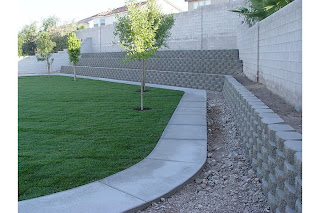Now, although I agree with him on the concept of shrimp (which I love to eat but get kind of grossed out when I see them) and liver (ditto), I don't necessarily agree with him on things like fresh fruits and vegetables. I really don't mind if a peach still looks like a peach when I eat it. I actually prefer that. But I have come to the conclusion that plants follow that rule themselves pretty closely.
If you put a pile of manure on a plant bed, it just sits there. The plants don't want it in that form (can you really blame them?). They want it broken down and reduced to forms they like. That's where the bugs and the worms and the bacteria all come in. They break down the manure and the waste materials into their component parts, add things to make it better, and then leave it for the plants to use. It's a great system, but it takes time.
We mimic and encourage this system with our compost piles. Here we pile up our grass clippings and plant waste and manures and kitchen scraps and then let them sit for a year or so while Nature takes its course. We keep it moist so it can work and we turn it periodically so it can breathe, but mostly we don't even think about it until we need to pile up some more waste.
I don't have the luxury of having a space that I can dedicate to the annual decomposition of materials so I have to make sure that I can keep my pile small and speed up the process. To do that, I "borrowed" some ideas from some commercial products and built a compost tumbler for myself.
| Finished compost tumbler in its own stand. |
By inverting the top, we were able to get a very good fit between the top and the sides of the barrel. It seems that the lid has a deep groove around it that just fits the sides, making me wonder if that was planned by some re-use engineer or if it "just happened that way."
| The lid fits quite snugly. |
| Standard plumbing components for the air system. If I were to do it again, I would use a toilet flange instead and save a couple of dollars in attaching the air pipe. |
The lid is currently held on with a ratcheting strap, but will soon be changed to some truck bungees as soon as I get them. It's worked fine all summer so far, and I don't seem to be in a rush to find the bungees.
Here's how it works. When the grass gets cut, the clippings get dumped into the barrel. Some water gets added and it is given a couple of turns which tumble all the stuff inside. Same thing when we add kitchen scraps, garden trimmings, shredded paper, manure, etc. I haven't kept track of everything that we've thrown in there, but we have certainly put more than 55 gallons of stuff into it. I would estimate that we have put at least 600 gallons of material into it. I'll bet we would have had a pile the size of a small car with everything we've put into it. It just keeps shrinking the stuff down into really great compost.
It gets pretty hot inside there, obviously the bacteria are getting enough food, water and oxygen, and it has never stunk. It gets hot enough that the sides of the plastic barrel, normally quite rigid and firm, are soft and somewhat pliable. I think it gets hot enough to cook any smelly stuff because there is no smell. Not only that, there is only a slight aroma of smoke when you lift the lid. Certainly nothing like it was before. And the materials get converted in a matter of a few weeks, rather than months.
| Here you can see the air pipe. Proper oxygenation is important so that you keep you compost process aerobic. Anaerobic decomposition stinks. Makes for bad farming neighbors. |
It's amazing to me how much this thing can eat. 6 months of grass clippings, all the kitchen scraps my worms can't eat, all the plant waste from the spring garden and lots of tomato plant trimmings, several bags of shredded paper, and several 5-gallon buckets of horse nuggets. Although it fills up when we add the grass clippings, by the next time we need to add stuff to it, there seems to be plenty of room. It's like the black hole of the garden. It has worked so well this year that we are actually planning on building another one this fall to double the amount of stuff we can compost, although I'm not sure where we'll get the waste materials to put into it.
Recently, my son-in-law was eyeing the neighbor's grass, suggesting that we offer to cut his lawn for him in exchange for his clippings.
Come to think of it, it is looking pretty shaggy over there....



